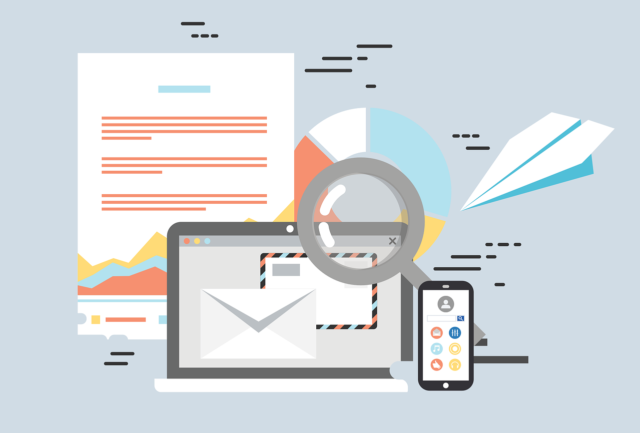It’s a common belief that emails are on the way out, getting replaced by social media and networking. However, that couldn’t be farther than the truth. In a professional setting, emails are better received and better understood than instant messaging. This is especially true when it comes to email marketing and outreach strategies. Tactics like cold email marketing rely on being up to date, fast, and reliable. Finding an effective cold email service that is able to compete with large companies is important if you want your business to survive
What is Cold Email?
Strictly put, cold email is like a cold call. It is an email sent to a customer that you have no prior relationship to. You might send this to a CEO of a company, or an investor, the list goes on. They are extremely useful in setting up business relationships and networking. However, many people are averse to unfamiliar emails in their inbox. They might take one look at the email and think it’s spam.
However, cold email strategies aren’t a form of spam. Whereas spam is impersonal and often advertises false information, cold emails are personal, letting you connect to whomever you need to. The problem is, though, more often than not your email has to compete with the many more in your recipient’s inbox. Therefore, making sure that your email is attractive to open is imperative.
How To Make Sure Your Cold Email Isn’t Spam
Done right, cold email isn’t spam. It’s a personal message, including contact information, a reason for connecting with you, and content catered to whomever the message is going for, all in good, plain English. Spam, on the other hand, is often filled with vague information, clickbait links, and bad English, all only for a commercial gain. Making sure that your cold emails don’t read like spam can take a lot of work, but it’s completely worth it.
First off, you want to make sure that you plainly state who you are and why you are contacting them. Don’t hide if the email is an advertisement for a service. You also want to use their name when contacting them, to make sure that they know this isn’t a copy-paste. Make sure that the content of your email matches both what you want to get out of the connection as well as what they can do for you in the connection. Phrases like “I’ve been a huge fan of your blog” or “we work in the same field” can go ways in establishing connections. Be careful that you don’t lie about familiarity, though. It can be seen as unethical and can devalue you as a reliable connection.
Don’t make it about you, though. Nothing is worse to a new contact than making a cold email that is self-centered. Keep the perspective on the client, instead of yourself. Make sure that you can give something to them, whether it be help with a problem, information, or a networking contact in yourself as well. And, although it comes as a given, avoid clickbaity titles and lines, as this acts more as a deterrent than anything.
What Next?
Always follow-up. Odds are if someone didn’t respond to your first email, they just didn’t see it. Or, they saw it, and are just too busy to make a decision. It can take up to three emails to get a response, but if done right, it can be effective. Don’t be annoying with it, though. An email every day probably isn’t the best way to get someone’s attention. Give it a little break, at least a couple of days to a week. But, make sure you don’t forget about it, either. By following up, you increase the chance that your cold email will be read and responded to.
Another thing you can do is add an opt-out line to the end of your email as a postscript. However, instead of a typical opt-out service, write something like “If this isn’t the correct person to ask, please let me know who is”. This is more personal than the traditional unsubscribe service. It lets the recipient know that you want to make sure that you talk to the right person for what you need.
Keep messaging short and sweet, as well. Don’t bore your contact with long, winding messages. More times than not, you can say the exact same thing in fewer words, meaning they will get the point of the email faster. If you take too long to keep them interested, then it will be impossible to grab their interest again.
Overall, just make sure that every effort to contact someone is personalized to them. You should make sure that they aren’t only copy-pasted scripts focusing on one thing. Nothing will put a potential client or partner off than something that is self-centered, not giving anything else in return.
What Are The Benefits Of Cold Email?
Cold email is great for start-ups, blog publications, and career-building. Many people have started from nothing and launched successful businesses from cold emails. This type of marketing is more personal than cold calling and can get you big results. You can also drop a big name in the middle of an email is a surefire way to make connections. Just make sure you can back up the claim, though.
Some people have reported huge gains from cold emails. Startups in places like Silicon Valley only survived because of them. In fact, companies like Uber, Storefront, Timehop, and Product Hunt all started from cold email strategies. These companies that had no previous affiliation with anyone are now million-dollar companies.
Following guidelines like these as well as others provided by GMass can ensure that you craft the best cold emails, allowing you to connect better than ever to new clients, contacts, or connections. Cold emails are a numbers game, and by playing the numbers right, you can turn them into one of the most valuable forms of communication in your arsenal of marketing strategies.








